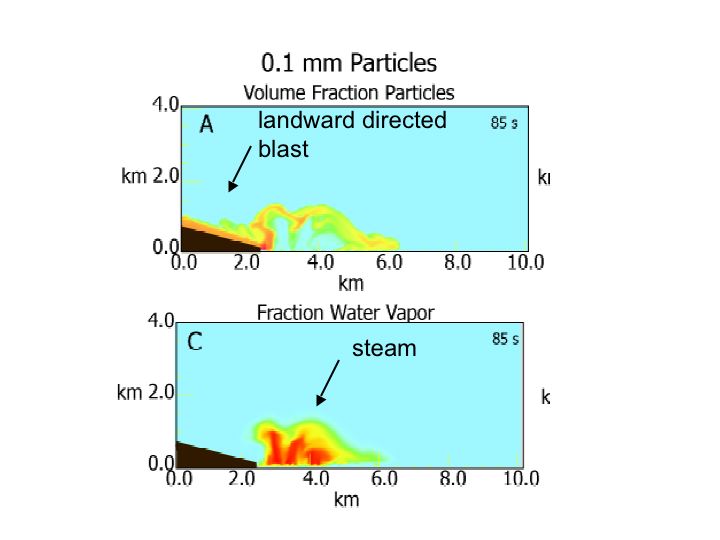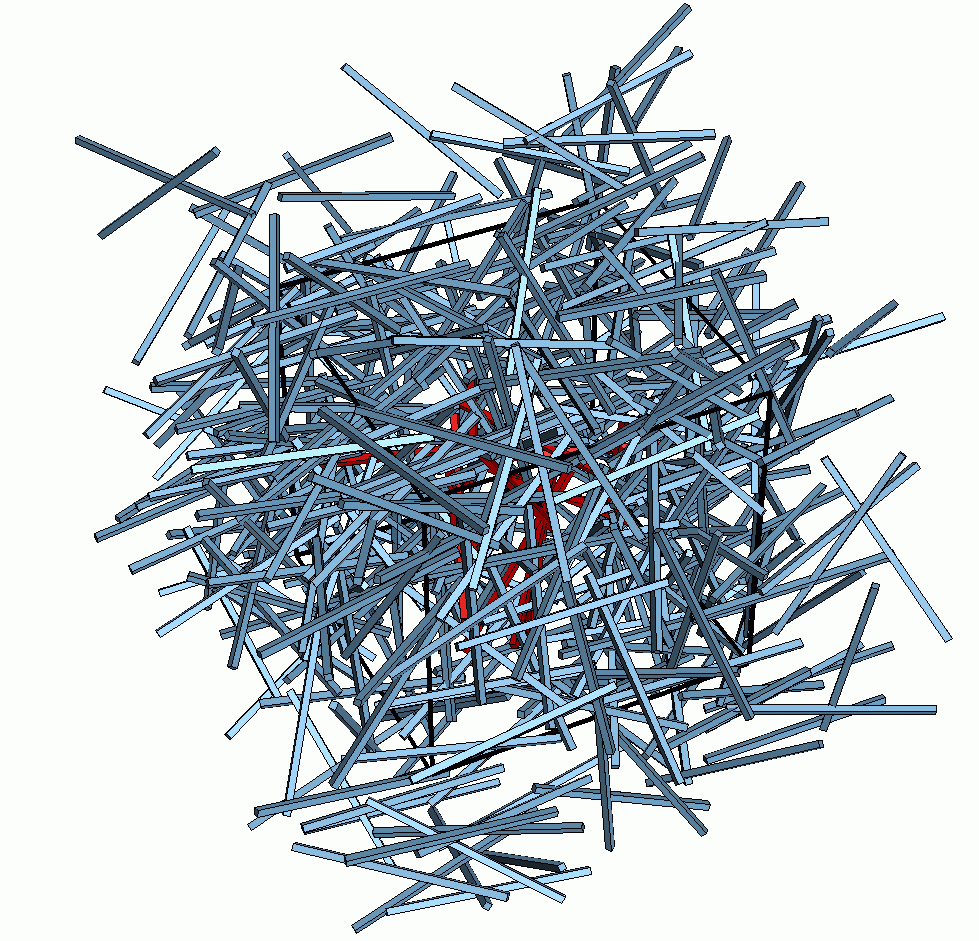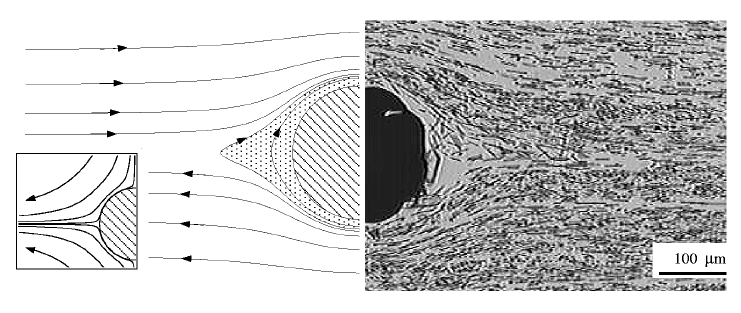MICHAEL MANGA
Neat stuff off the computer
Some recent computational efforts focus on two problems: 1) mantle convection, 2) the rheology
and dynamics of suspensions, and 3) continuum percolation theory.
A couple images from these calculations

Simulation of a hot pyroclastic flow entering the ocean. The rapid conversion of water to steam when the flow reaches the ocean creates a blast that sends part of the flow back on land. For information see
Dufek et al. (2007); calculation by Joe Dufek using experimental measurements
made by Marcel Staedter.

3D simulations of the temperature in the Martian mantle
for a planet with (right) and without (left) a thick crust in
the southern hemisphere. These calculations include a dense
layer at the base of the mantle (bottom row).
Simulations done with CitcomS (Moresi and Gurnis, 1996; Zhong et al., 2000).
(from the work of graduate student Mark Wenzel, in collaboration with
Allen McNamara)

Oblate crystals forming an interconnected network
(from the work of graduate student Martin Saar)

Deformed bubbles: left) Rising, interacting and deforming bubbles;
right) Bubbles deformed in a simple shear flow.
Calculations of the deformation and rheological
properties of the suspension are done using boundary integral
methods.

Deformation of high (b) and low (c) viscosity
ratio regions in a flow driven by plate motions (a).

Right: Pyroxene microlites oriented around a feldspar phenocryst.
Left: Calculated streamlines around a freely rotating sphere in a simple
shear flow.
Inset: Calculated streamflow for pure shear around a sphere.
Return to Michael's
home page





